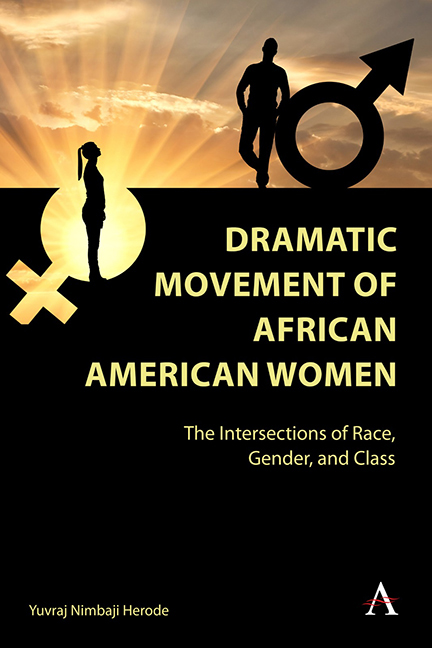Chapter Three - Lorraine Hansberry
Published online by Cambridge University Press: 28 February 2024
Summary
Life Sketch and Works
Lorraine Hansberry was born in Chicago, Illinois, on May 19, 1930, to Nannie Perry Hansberry and Carl A. Hansberry. Her home was a center of African American social, economic, political, and cultural life. She grew up in an upper-middle-class family. Her father was a powerful realtor who has built his fortune on the sale and rental of kitchenettes to relieve the crowded housing conditions of the African Americans. He won a Supreme Court case against housing discrimination. Her mother was a ward committee woman who helped to manage the buildings and tenants. The parents taught their four children pride in themselves and in their race. In African American Writers Conference in 1959, Hansberry said, “I was born black and a female” (qtd. in Burke 125). She, thus, acknowledged her identity of being black and female. This double consciousness marks her dramatic writing.
In 1938, Carl Hansberry moved his family into a “restricted” (Carter 40) area near the University of Chicago to test real estate agreements excluding African Americans. Mobs threw bricks and concrete stabs through the family's window toward them. Hansberry recalls her “desperate and courageous mother, patrolling our house all night with a loaded German luger, doggedly guarding her four children, while my father fought the respectable part of the battle in [The U. S. Supreme Court]” (qtd. in Burke 125). This incident forms one of the themes of A Raisin in the Sun in which an African American family tries to move from a ghetto into the suburbs.
In 1944, Lorraine graduated from Betsy Ross Elementary School. During 1948 and 1950, she attended University of Wisconsin studying art, literature, and drama and stage design. In the early 1950s, she worked as a journalist and associate editor for Freedom, an African American progressive newspaper in New York City founded by Paul Robeson. During this time, undercurrents of social protests were mounting and these protests filled the pages of Freedom. In 1953, she married Robert Nemiroff and they moved to Greenwich Village where she began writing. Their settlement in Greenwich Village forms the setting for her play, The Sign in Sidney Brustein's Window. In 1964, her marriage to Nemiroff ends in divorce, but their creative collaboration continues. And she dies of cancer on January 12, 1965, at the age of thirty-four.
- Type
- Chapter
- Information
- Dramatic Movement of African American WomenThe Intersections of Race, Gender and Class, pp. 83 - 122Publisher: Anthem PressPrint publication year: 2023

